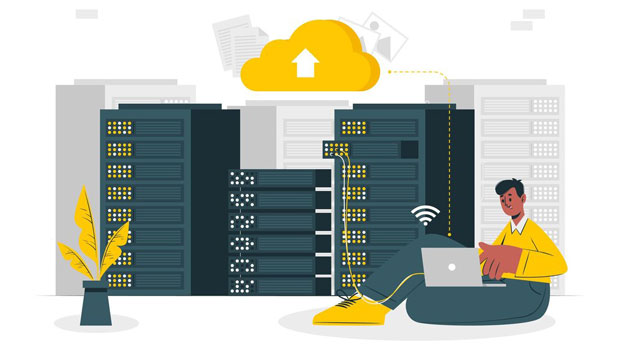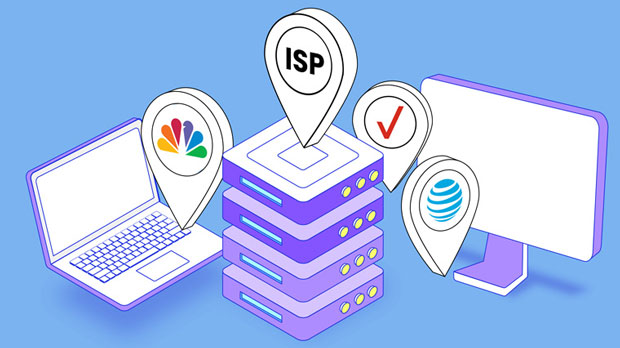PYPROXY has emerged as an effective solution for game acceleration and latency optimization, especially for gamers and online users who face connection issues like high ping and lag. Its performance in reducing latency and improving online gaming experience has attracted attention from both casual players and e-sports professionals. By analyzing the mechanisms and benefits of PyProxy, we can better understand its key features, performance, and the reasons behind its increasing adoption in the gaming community. This article explores how PyProxy works, its advantages in game acceleration, and how it minimizes latency to offer a smooth and enhanced gaming experience. Introduction to PyProxy and Its Role in Game AccelerationThe world of online gaming is highly sensitive to network conditions. Factors like high latency, packet loss, and unstable connections can severely degrade the gaming experience. PyProxy, a tool that functions as a proxy server, acts as a bridge between the user's device and the game server, optimizing traffic flow and improving connection speed. By intelligently managing network paths, PyProxy reduces the time it takes for data to travel between the user and the server, resulting in lower ping rates and reduced lag. Game acceleration tools like PyProxy help gamers avoid disruptions caused by network congestion and ensure that gameplay remains smooth and responsive. The primary function of PyProxy is to optimize the connection by directing traffic through the most efficient routes, bypassing traffic bottlenecks and reducing the overall ping time, a vital factor in online gaming performance.The Technology Behind PyProxy and Its Impact on LatencyTo understand how PyProxy achieves game acceleration, it's essential to look at the underlying technology it uses. At its core, PyProxy uses a set of advanced algorithms that allow it to optimize data routing. This technology ensures that data packets are sent over the fastest possible paths, minimizing the number of hops between the user's device and the game server.Latency, the delay between sending a request and receiving a response, is one of the most important factors affecting the quality of online gaming. PyProxy tackles latency issues by reducing the round-trip time of data packets. When a user connects to a server directly, data may take a convoluted path through overloaded or distant servers, resulting in high latency. PyProxy identifies and redirects traffic through optimized routes, shortening the time it takes for data to reach the server and ensuring a faster and more reliable connection.Moreover, PyProxy also uses data compression techniques to minimize the size of data packets being transferred, further speeding up the communication process. The combination of intelligent routing and data compression makes PyProxy particularly effective in reducing latency and ensuring that gamers experience smoother gameplay without the interruptions that come with high ping.Advantages of Using PyProxy for Online Gamers1. Reduced Ping and Lag The primary benefit of using PyProxy is its ability to reduce ping and lag, which are two of the biggest concerns for gamers. High ping can make games unplayable, especially in fast-paced multiplayer titles. PyProxy addresses this by optimizing the routing paths, significantly lowering the latency and ensuring that commands are executed almost in real time.2. Improved Connection Stability In addition to reducing ping, PyProxy also enhances the overall stability of the connection. Network congestion, fluctuating server load, and other external factors can cause instability, leading to sudden disconnections or freezing during gameplay. PyProxy helps stabilize the connection by constantly monitoring the network and ensuring that the best route is always chosen.3. Better Gaming Experience in Remote Locations Gamers who are located far away from game servers or in regions with poor network infrastructure can particularly benefit from PyProxy. By routing the connection through more optimized paths, users in remote areas can enjoy a gaming experience that is comparable to those located near the game servers, leveling the playing field for all players.4. Compatibility with Various Games and Platforms Another significant advantage of PyProxy is its compatibility with a wide range of games and platforms. Whether it's a PC, console, or mobile device, PyProxy can be integrated with multiple gaming environments, providing versatility for gamers across different ecosystems.How PyProxy Addresses Specific Gaming Latency ChallengesOnline gaming latency issues vary depending on several factors, including the location of the game servers, network infrastructure, and the type of game being played. For instance, in competitive online multiplayer games like first-person shooters (FPS), even a small increase in latency can result in missed shots or delayed actions, negatively affecting performance.PyProxy addresses this challenge by using advanced routing algorithms that prioritize low-latency connections. For example, in FPS games, where reaction time is crucial, PyProxy helps reduce the input lag, allowing gamers to execute commands more quickly and with greater accuracy. This becomes especially important in competitive settings, where every millisecond counts.Furthermore, PyProxy’s ability to bypass congested network paths helps users avoid delays caused by network bottlenecks. By rerouting traffic around these congested areas, it ensures that gamers experience minimal latency, even during peak usage hours when other users may experience slower speeds.The Future of PyProxy and Its Potential for Further OptimizationAs online gaming continues to grow in popularity and complexity, the demand for better acceleration and latency optimization solutions will increase. PyProxy is well-positioned to meet these needs, thanks to its adaptability and continuous development.Looking ahead, one potential area for further optimization is the use of artificial intelligence (AI) and machine learning (ML) algorithms to predict and adapt to changing network conditions in real time. By leveraging AI, PyProxy could improve its routing strategies even further, learning from previous data and continuously refining its optimization techniques. This would not only enhance the gaming experience but also improve the efficiency of the overall network, reducing latency even during unexpected surges in traffic.Additionally, as 5G networks become more widespread, PyProxy may be able to leverage the high-speed, low-latency capabilities of these networks to further enhance its performance. This could lead to even smoother gameplay experiences, particularly for mobile gamers who are often limited by slower 4G connections.In conclusion, PyProxy offers a robust solution for game acceleration and latency optimization, making it an invaluable tool for gamers who seek to improve their online gaming experience. By reducing ping, stabilizing connections, and optimizing data routing, PyProxy ensures that gamers enjoy smoother, more responsive gameplay. As gaming technology evolves and network demands increase, PyProxy’s ability to adapt and innovate will be crucial in maintaining its position as a leading solution in the gaming community.For gamers, especially those in regions with poor connectivity or high network congestion, PyProxy provides a gateway to better online performance, leveling the playing field and allowing them to enjoy the best possible gaming experience. As the future of gaming continues to unfold, solutions like PyProxy will play an essential role in shaping how we experience online gaming.
Oct 27, 2025



































































